Fox News Flash top headlines for July 23
Fox News Flash top headlines are here. Check out what's clicking on Foxnews.com.
A female hiker died on Sunday on a trail near near Quail Creek State Park in southern Utah, according to local reports.
The woman, 56, who was not identified in the report, had sent out a distress call regarding lack of water and high temperatures, but by the time police arrived, she was unresponsive and pronounced dead at the scene.
The local temperature was 106 degrees Fahrenheit when the woman's death was reported.
FIREFIGHTERS CARRY 160-POUND DOG DOWN OREGON MOUNTAIN AFTER PUP IS INJURED ON TRAIL
This recent hiking death and others, many of them heat-related, have spotlighted the need for safety protocols.
While experts agree that hiking is considered a good form of exercise, they stress the importance of being prepared before heading out on the trail, especially during the hot summer months.

Outdoor enthusiasts shared tips to help prevent trail hazards amid a flurry of recent hiking-related deaths this summer. (iStock)
Outdoor enthusiasts shared the following important tips to help prevent hiking hazards.
1. Study the hiking area before your trip
Before heading out on a hike, familiarize yourself with maps, landmarks and any restricted areas or required permits, say trail experts.
"Research the terrain, trail difficulty, weather conditions and local wildlife," Joey Coe, a trip leader for Backroads, a California-based travel touring company, told Fox News Digital.
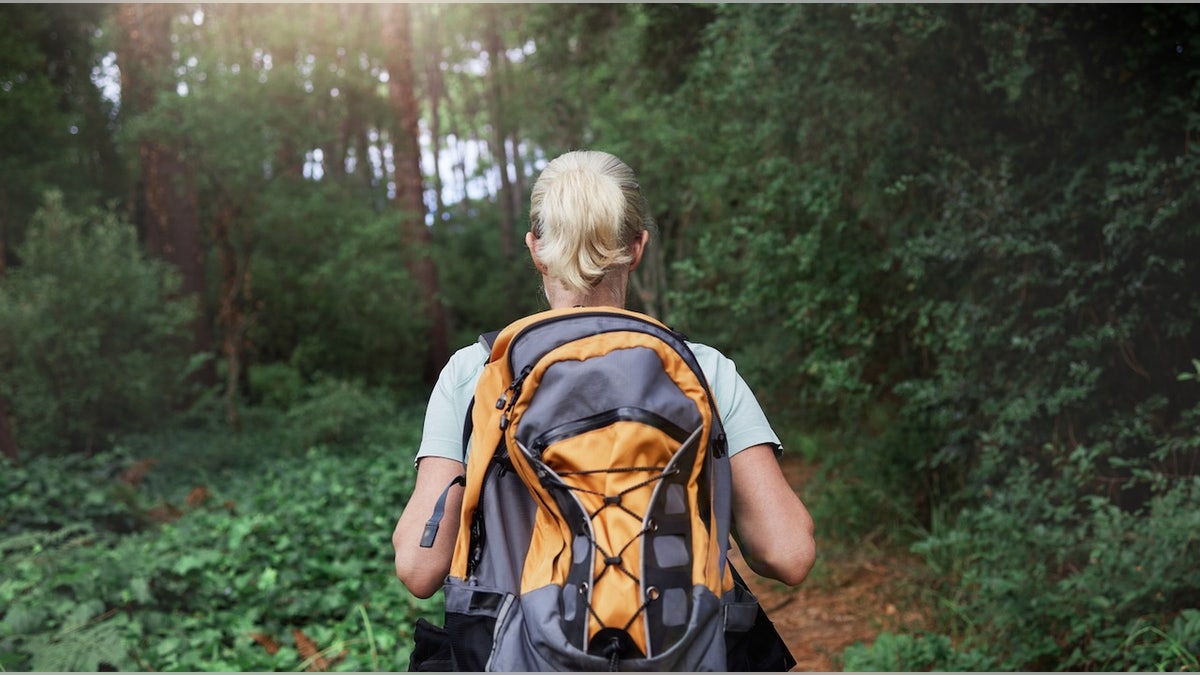
A female hiker (not pictured) died on Sunday on a trail near near Quail Creek State Park in southern Utah, according to local reports. (iStock)
Coe also suggested saving a photo of the trail map on your phone to reference while hiking.
Although cell phones and mapping apps can be helpful, it is important to have a backup paper map in the event of a lost signal, according to Guy deBrun, a lecturer at the Hart School of Hospitality, Sport & Recreation Management at James Madison University in Virginia.
WHAT IS A DERECHO? HERE'S A METEOROLOGICAL EXPLANATION AND OTHER INTERESTING FACTS
"Knowledge of how to use a paper map is imperative," deBrun, who is also an instructor in wilderness first aid, told Fox News Digital in an email.
Hikers should also know the difficulty level of the planned route, according to the American Hiking Society, a nonprofit based in Silver Springs, Maryland.
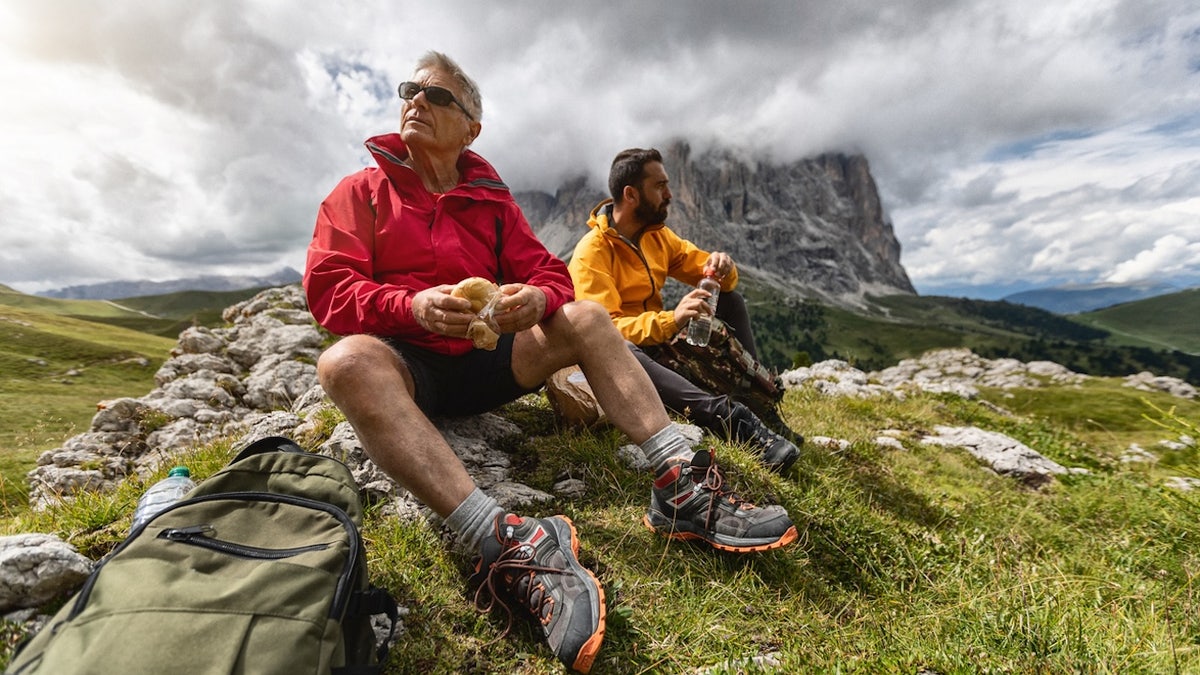
Pack lightweight, high-energy foods such as nuts, dried fruit, energy bars and sandwiches, and avoid bringing perishable items unless you have proper storage, experts said regarding outdoor hikes. (iStock)
"It’s also helpful to identify possible emergency exit points," Maggie Peikon, manager of communications with the American Hiking Society, told Fox News Digital via email.
Online forums and trail reviews can also provide valuable information about the terrain, she added.
2. Set a ‘time plan’ for your hike
Whether you are setting off alone or with a group, let someone know your expected time frame for arriving at predetermined spots along the trail, experts recommend.
"Knowledge of how to use a paper map is imperative."
One approach is to create a "time control plan," which considers linear distance and elevation.
A general rule of thumb is to travel two miles per hour, adding one mile for every 1,000 feet of elevation gain.
"Most novices fail to plan for elevation gain," deBrun told Fox News Digital.
"One thousand feet of elevation gain adds one mile to your total mileage. So, if you are hiking five miles and gaining 2,000 feet, you [should] consider it seven miles. Divide by two miles an hour to estimate your time."
It is also important to project the amount of daylight you will have during your excursion to avoid returning in the dark if you don’t have the necessary gear to hike at night.
3. Know your limits
It’s best to start small and build, starting with short, easy, well-marked trails that match your fitness level, experts agreed.
"Take breaks as needed, and don't push too hard," said Coe.
Peikon added, "If you’re feeling too tired, or realize you’re not going to make it to your destination within the time frame you prepared for, turn around and err on the side of caution."

Before heading out on a hike, trail experts recommend familiarizing yourself with maps, landmarks, and any restricted areas or required permits. (iStock)
It’s also important to stay on the trail, she said.
"Avoid taking shortcuts. Getting off the trail for any reason can easily result in becoming directionally disoriented and getting lost."
4. Maintain a safe distance when hiking
Aim to keep a distance of at least a few feet between hikers to avoid accidents and allow space for wildlife, experts advised.
For people hiking in a group, it’s best to avoid taking up the whole trail width, according to the American Hiking Society.
WEAR SUNSCREEN THE RIGHT WAY THIS SUMMER BY UNDERSTANDING SPF AND THE PROPER APPLICATION PROCESS
Hikers going downhill should yield to those going uphill.
Also, be wary of potential poisonous vegetation in that region so you can keep a safe distance and avoid accidental contact, experts cautioned.
5. Prepare for weather conditions
Hikers should consider local weather patterns when deciding what to wear on a hike, experts told Fox News Digital.
"In many mountainous areas, lightning storms regularly occur in the afternoon," deBrun said. "Hikers should take this into account."
Coe recommended dressing in layers to help adjust to changing temperatures.
"Moisture-wicking, quick-drying materials are best," he said.

In areas where bears are prevalent, experts suggest packing bear spray to use in the event of an unexpected encounter. (iStock)
Bring a hat, sunglasses, sunscreen and rain gear, experts advised.
For family hiking trips, it’s important to be aware of children’s body temperature. "If you are carrying a child, he or she may be cold while you are burning up," Peikon said.
NEW YORK STATE FISHING RECORD BROKEN WITH SPECIES DATING BACK 100 MILLION YEARS
"Conversely, you may feel chilled while your child is warm from running around and playing."
If multiple children are on the hike, dress them in bright, visible clothing so you can more easily spot them, Peikon said.
6. Wear comfortable, supportive footwear
Multiple hiking trip leaders suggested wearing sturdy, well-fitted hiking boots with good ankle support.
"Break them in before your trip to avoid blisters," Coe cautioned.
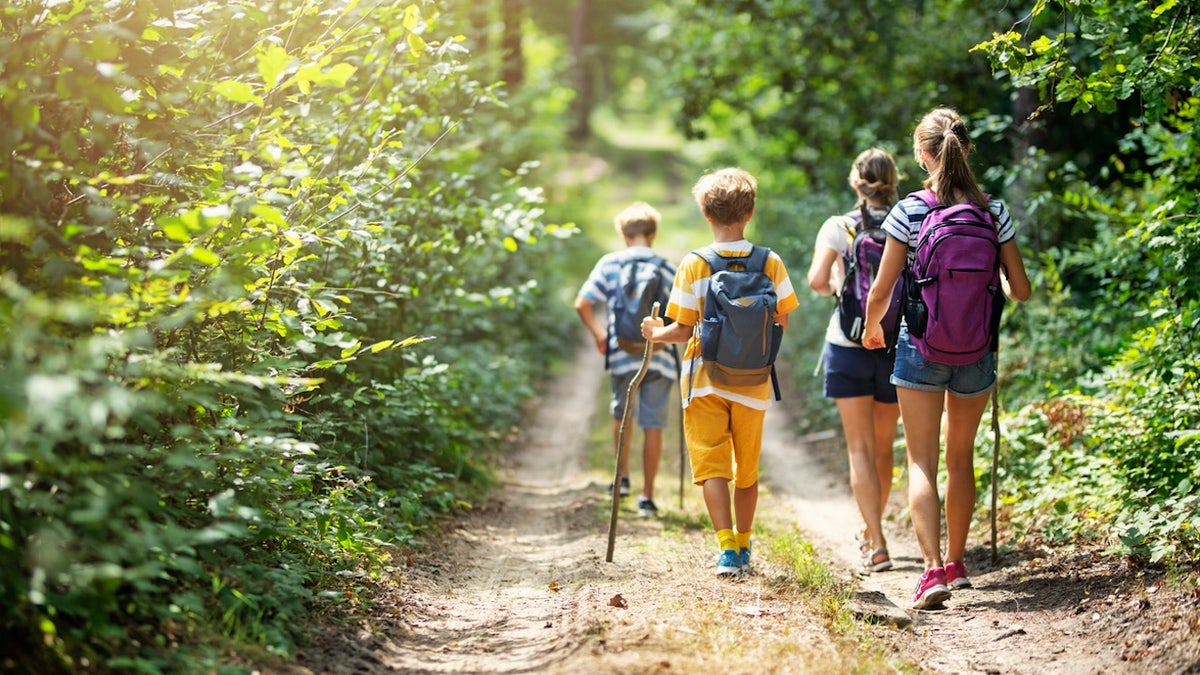
If multiple children are on the hike, dress them in bright, visible clothing so you can more easily spot them, an expert said. (iStock)
Running shoes or trail runners can be appropriate, deBrun said, but hiking boots may be more appropriate in wet or rocky terrain.
7. Bring along essential equipment
Pack a compass or GPS, whistle, flashlight, a basic first aid kit and trekking poles (if needed), said experts.
Teach children to blow the whistle several times in the event they wander away from the group, they also advised.
Pack a compass or GPS, whistle, flashlight, a basic first aid kit and trekking poles (if needed).
"Be aware of your group's medical needs and any potential allergies," Coe said.
Hikers might also want to consider taking a wilderness first aid course, he added.
CLICK HERE TO GET THE FOX NEWS APP
In areas where bears are prevalent, experts suggest packing bear spray to use in the event of an unexpected encounter.
It’s also a good idea to check with local animal experts about how to navigate an encounter with wildlife.
8. Stay fueled and hydrated
Pack lightweight, high-energy foods such as nuts, dried fruit, energy bars and sandwiches, and avoid bringing perishable items unless you have proper storage, experts said.
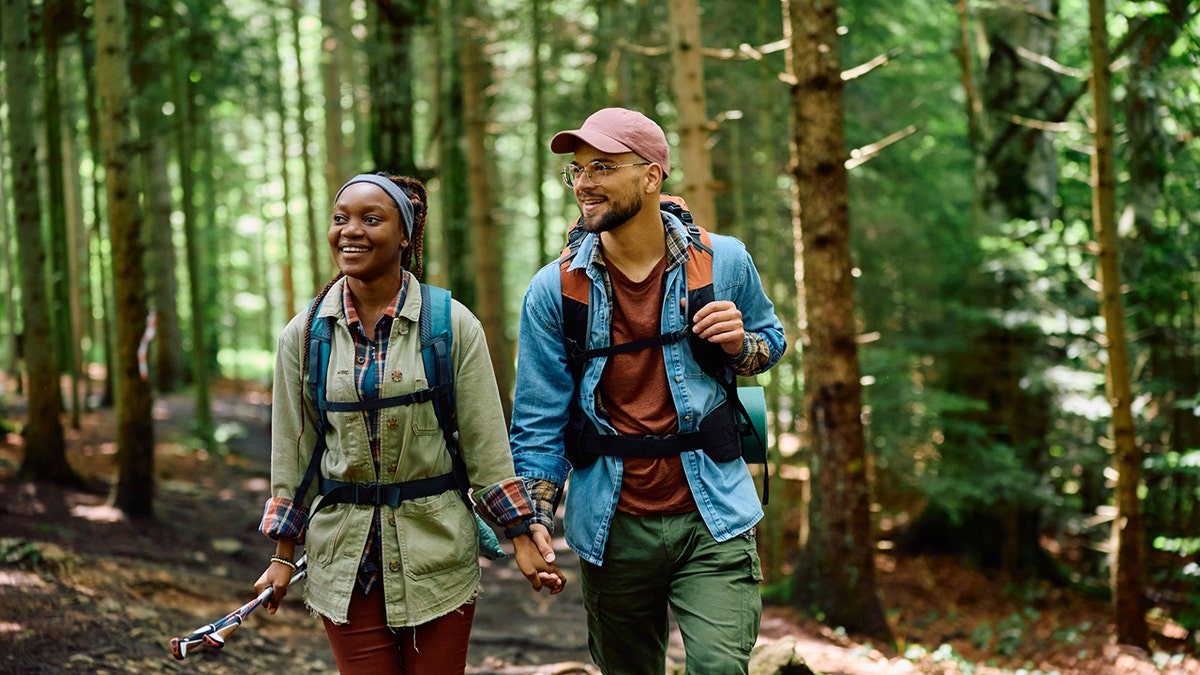
Aim to keep a distance of at least a few feet between hikers to avoid accidents and allow space for wildlife, experts advised. (iStock)
It is also important to leave no trace of food behind.
"Carry out all trash and leftover food to avoid attracting wildlife and to prevent littering," Coe advised.
CLICK HERE TO SIGN UP FOR OUR HEALTH NEWSLETTER
Packing enough water is essential.
"Bring at least half a liter of water for every hour you plan to be hiking," Peikon said — even more when hiking in the heat.
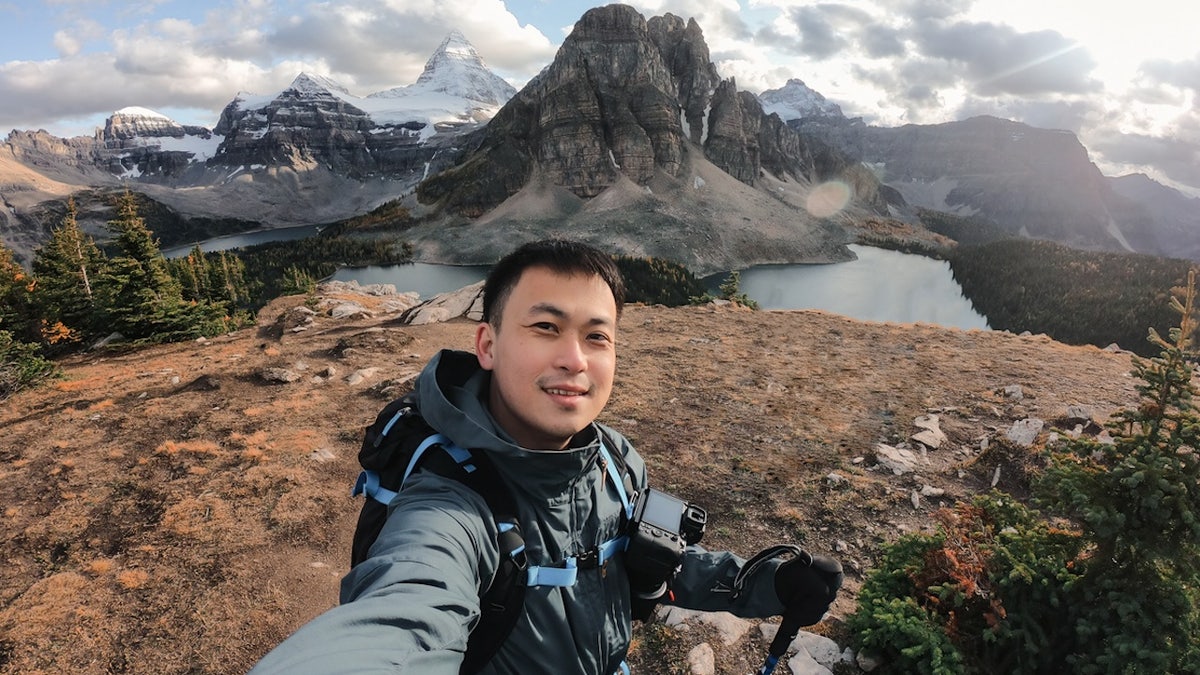
Selfies can distract hikers from their surroundings, which can increase the risk of falls or cause them to miss a hazard, according to hiking experts. (iStock)
Very few water sources are safe to drink without purification, deBrun cautioned.
"Research water sources and bring a water purification system for longer hikes," he said.
9. Use caution with cellphones and selfies
Selfies can distract hikers from their surroundings, which can increase the risk of falls or cause them to miss a hazard, according to hiking experts.
"It is always tragic to hear of fatalities due to selfies, which does happen every year in U.S. national parks," Coe told Fox News Digital.
For more Health articles, visit www.foxnews/health
If you need to use your phone, stop walking and stay aware of your surroundings, he said.
"Use your phone only for emergency calls and navigation as needed," Coe added.
Melissa Rudy of Fox News Digital contributed reporting.





















